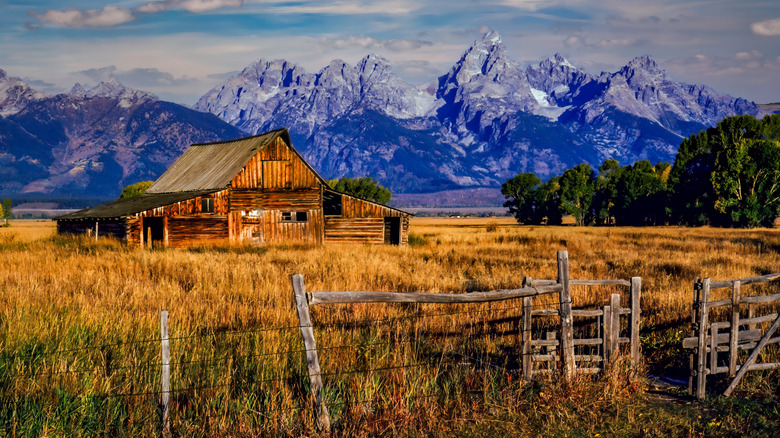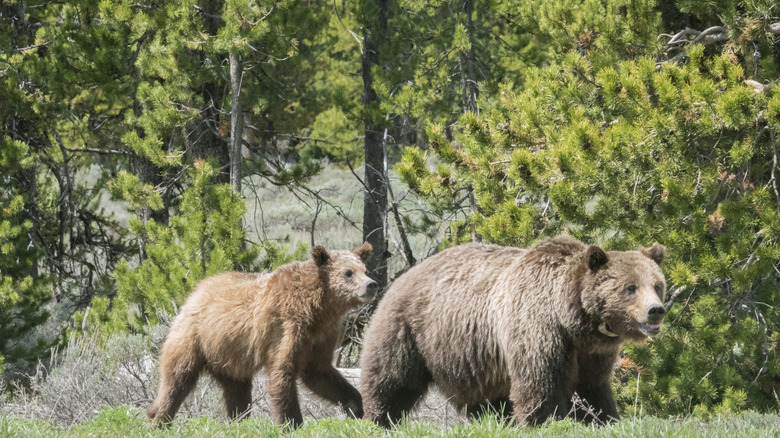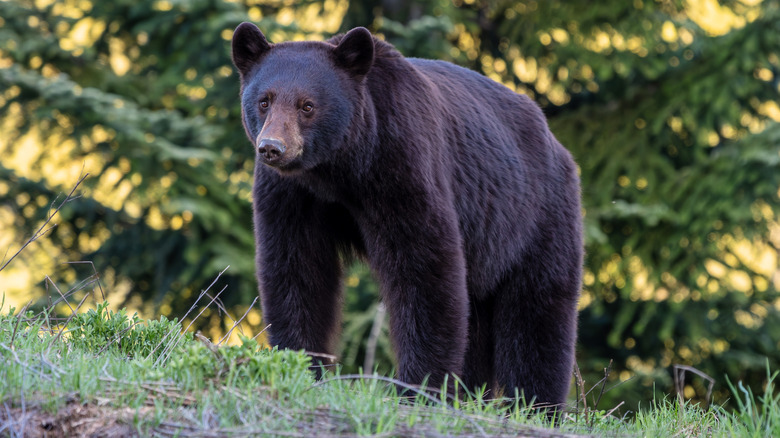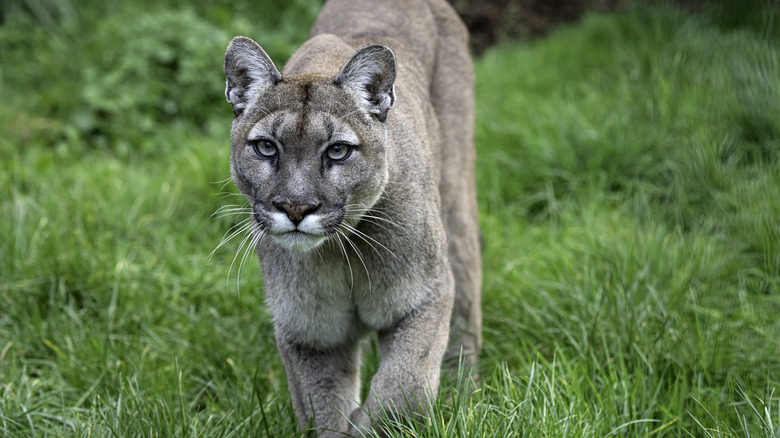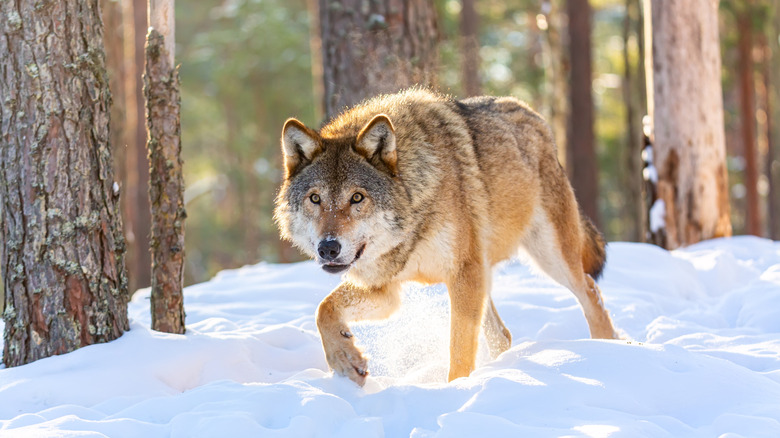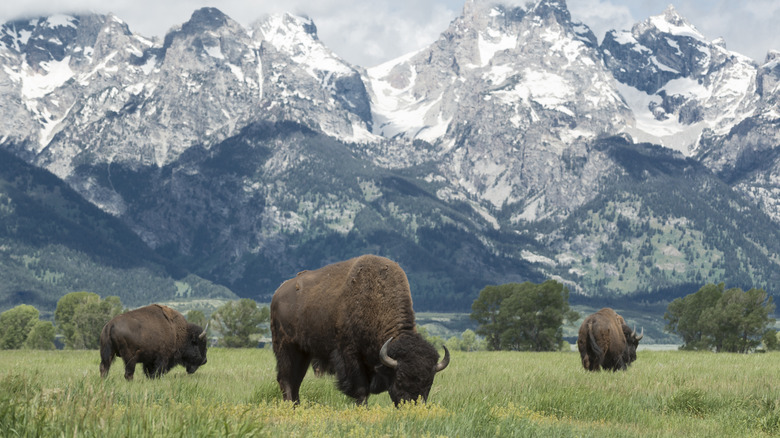5 Creatures To Beware Of When Adventuring In Grand Teton National Park
We may receive a commission on purchases made from links.
Grand Teton National Park takes in nearly 500 square miles of the Rocky Mountains in the northwest corner of Wyoming. Prior to it becoming a national park in 1929, the stretch of the famed mountain range was traversed by Native Americans, trappers, traders, explorers, and early homesteaders and ranchers. Today, it has a myriad of outdoor recreational opportunities, ranging from fishing to mountain climbing, that attracts nearly three-and-a-half million visitors to Grand Teton National Park each year.
While the reasons people come to the area encompassed by Grand Teton National Park has changed through time, the fact that there are a number of potential dangers facing those who explore here has not. In addition to the hazards presented by the rugged landscape, there are many creatures to beware of when adventuring in Grand Teton National Park. Although, according to the National Park Service, there are no venomous snakes, there are plenty of formidable mammals that can inflict serious harm. From the grizzly bear, which is the iconic image of danger in the mountains, to the resurgent wolf population, it is important to take proper precautions to avoid hostile encounters with these creatures.
Grizzly bears are an ever-present danger
Grizzly bears are among the most dangerous types of bears in the world. Every year, there are around three dozen grizzly bear attacks, including a few fatal ones, in North America. Attacks have been known to occur within Grand Teton National Park as well, including a serious, but non-fatal attack in late spring of 2024. Given the possibility of such encounters, it is important to know what to do if attacked by a bear and carry bear spray, like SABRE Frontiersman, whenever you are adventuring in Grand Teton National Park.
If you do come across a grizzly, it is important to stay calm and, above all else, do not run! Running can trigger an aggressive instinct in the bear and make an attack all the more likely. It is equally important to not climb a tree in an escape attempt, as bears can climb far better than people. Instead, try to make yourself look as large as possible, speak calmly to the bear, and try slowly moving away while keeping your eyes on the bear. If a grizzly bear does attack, play dead — lay on your belly with your pack on and cover your head. Often if the bear believes the threat has been neutralized, it will cease the attack.
Black bears can pose a threat
Grizzlies aren't the only type of dangerous bears to inhabit Grand Teton National Park — American black bears are also found here. Although black bears are considered to be less aggressive than grizzlies, they can and do attack upon occasion. However, although both bears are capable of attacking, the way you react to an aggressive encounter will vary depending on which bear you are facing. With that in mind, it is critical that you not only know how to use bear spray, but also are able to tell the difference between grizzly and black bears.
Making noise as you hike or move around camp can help alert bears to your presence. Most often, they will move off before you see them. However, if you encounter a black bear, the initial steps are the same — keep calm, don't run, don't climb a tree, and try to make yourself appear as large as possible while slowly moving away from the area. If a black bear does attack, do not play dead. Rather, fight back, using whatever you can grab as a weapon. Black bears will often stop an attack if they are met with resistance
Mountain lions are often unseen but dangerous
Mountain lions are the largest predatory cat found in the Rocky Mountains. While attacks are relatively rare, they do happen. Sightings of these elusive felines are nearly as rare as attacks, although they do live in Grand Teton National Park and have indeed been sighted. The fact these big cats can conceal themselves so well is one of the reasons they pose such a threat and yet another reason for those adventuring in the park to pay attention to their surroundings and keep an eye out for mountain lion warning signs.
It is important for visitors to Grand Teton National Park to know what to do if they see a mountain lion. You should always make noise while hiking and never venture into mountain lion territory alone. If you do see a mountain lion, you should make yourself appear large and wave your arms while speaking in a loud, firm voice. You should also avoid bending over if at all possible. If the cat continues to move towards you, throw sticks or rocks in its direction. Although this is typically enough to scare mountain lions away, if the cat does attack, you should fight back and even use bear spray if you have it.
Wolves will protect their territory
The area that is presently in the boundaries of Grand Teton National Park was traditionally timber wolf territory, although the species had been extirpated by the mid-1900s. However, during the 1990s, wolves were reintroduced to Yellowstone National Park and eventually made their way to Grand Teton National Park. The population has continued to grow and the park is presently home to around four dozen wolves split into six packs.
While the return of the wolves into the park has been much heralded, it also adds one more creature to the list of those to beware of when adventuring in Grand Teton National Park, as timber wolves are considered a dangerous type of wolf. As such, it's imperative to know what to do if you run into a wolf before heading into the park.
In general, wolves are considered timid and try to avoid humans. However, they have been known to attack, particularly if they are protecting their cubs or food source or have become habituated to humans. If you do run into an aggressive wolf, do not run. Make yourself appear large, make noise, and throw objects in the animal's direction. If it attacks, fight back, using rocks or sticks as weapons.
Bison are an unexpected danger
Bison are the largest mammals walking on the North American continent. Outwardly, they appear very calm and non-threatening. However, they can become aggressive and have the size and strength to inflict tremendous harm. In fact, most of the animal attacks and aggressive animal encounters in northern Wyoming involve bison, including the violent attack of an elderly woman by a bison in nearby Yellowstone National Park in early summer 2024, as detailed by The Guardian.
The good news is bison attacks are almost always avoidable. The best way to remain safe is to remain a safe distance from bison. It is recommended to stay at least 100 yards away. One simple way to judge this distance is to hold your hand in a thumbs-up position with your arm extended. If your thumb completely covers the bison, you are a safe distance away. If a portion of the animal is extended outside your thumb, you should back away.
You should also never approach or attempt to feed or pet a bison. Additionally, be observant for signs the animal may be getting agitated. Physical actions such as swinging its head back and forth, pawing the ground, snorting, or making short burst charges are signs the bison is getting ready to attack. If you see any of these signs, back away. If you are unable to move away before a bison charges, hide behind trees, vehicles, buildings, or other large objects.
